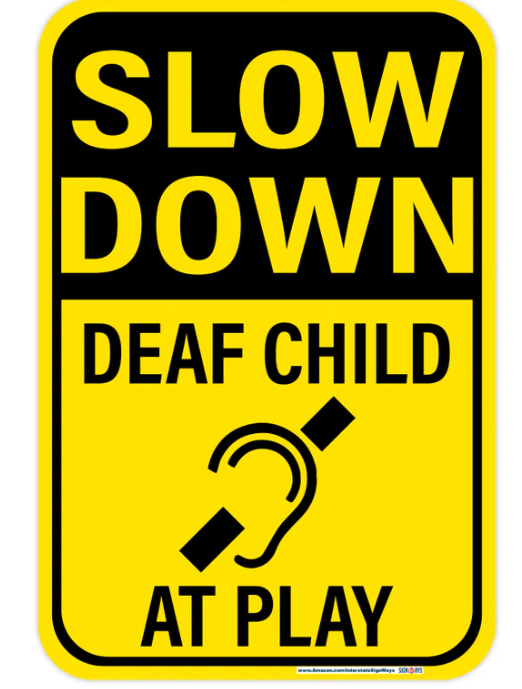Signs
My two daughters were very young when we moved across town. Mary Clare was wrapping up her 4th grade year and Bridie was about to enter 2nd grade. Our former home was on a quiet cul-de-sac, so nearly all the cars coming through were our neighbors who knew our family well - including our deaf child. Our new house was located several miles away in a busier neighborhood, where two roads intersected.
Most families changing their address would not have given daily safety much of a second thought. But, as the parent of a child with hearing loss, it was top of mind. Bridie, who had been diagnosed with bilateral sensorineural hearing loss just a few years earlier, was accustomed to skipping across our lawn and down the street to play with the neighborhood children. At the old house, we had taught her about looking both ways before crossing, even though cars rarely drove through - and when they did, it was generally very slowly. Most of our neighbors knew that Bridie had lost her hearing as a toddler and they all kept a close eye on the road.
This new house, however, was a completely different story. Vehicles from several blocks away would weave through at all times of day. Teenagers with new driver’s licenses would zip through, music humming through their dashboard. About a month after we moved I decided to install yellow Deaf Child At Play signs at all the corners leading into our neighborhood. I informed several neighbors about our child’s disability. I would watch Bridie skip down the street after school, in search of new playmates.
I remember being told when Bridie was three years old and recently diagnosed that hearing aids would not only offer her access to the soft sounds of speech, but also provide access to important environmental sounds - like barking dogs, thunder, and the honking horn of a car. But exactly how much access were we talking about? How close would a car or truck need to be for her to hear the hum of the engine?
Today as I was pulling into our neighborhood, I passed one of the yellow Deaf Child at Play signs I had posted nearly 13 years ago. My daughter is almost 20 years old now and a successful college student. She will return home for the summer in a few weeks. Seeing that sign reminded me that even today I worry about how her hearing loss impacts her safety. Will she hear the siren of a police car while driving on the highway? Will she hear the car behind her when riding her bike to class? Will she notice the smoke alarm in her off-campus apartment if she’s brushing her teeth before bed?
Families of children who are deaf and hard of hearing have extra safety concerns to navigate and mitigate, and those worries don’t dissolve when they turn 18 or move away from home. They remain because their hearing loss remains. From a safety perspective, my child will always be at an aural disadvantage. But perhaps, that also means she has advantages I don’t recognize. Visual acuity - like tuning into the subtly aggressive or distracted driving behaviors of the cars ahead of her, or noticing the lights of a firetruck behind her well before I ever would. Perhaps her adult brain has adapted to provide vital safety skills I will never know about. I hope this is the case.
For the mamas and the papas out there who are new to this journey, and who are wondering or worrying about their deaf/hard of hearing child’s safety, you are not alone. This, too, is part of the journey. And, you will discover unique ways to support and encourage your child’s exploration of the world around them, until they can explore the world without you.


